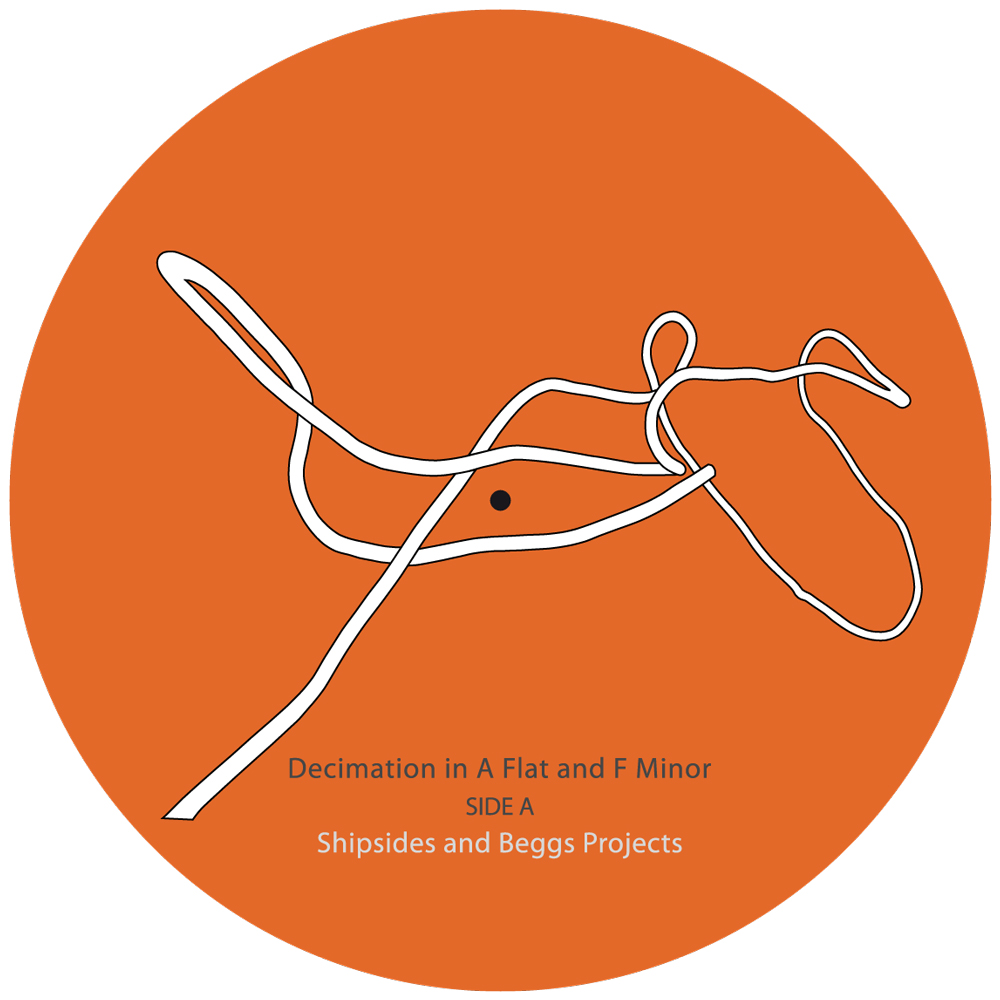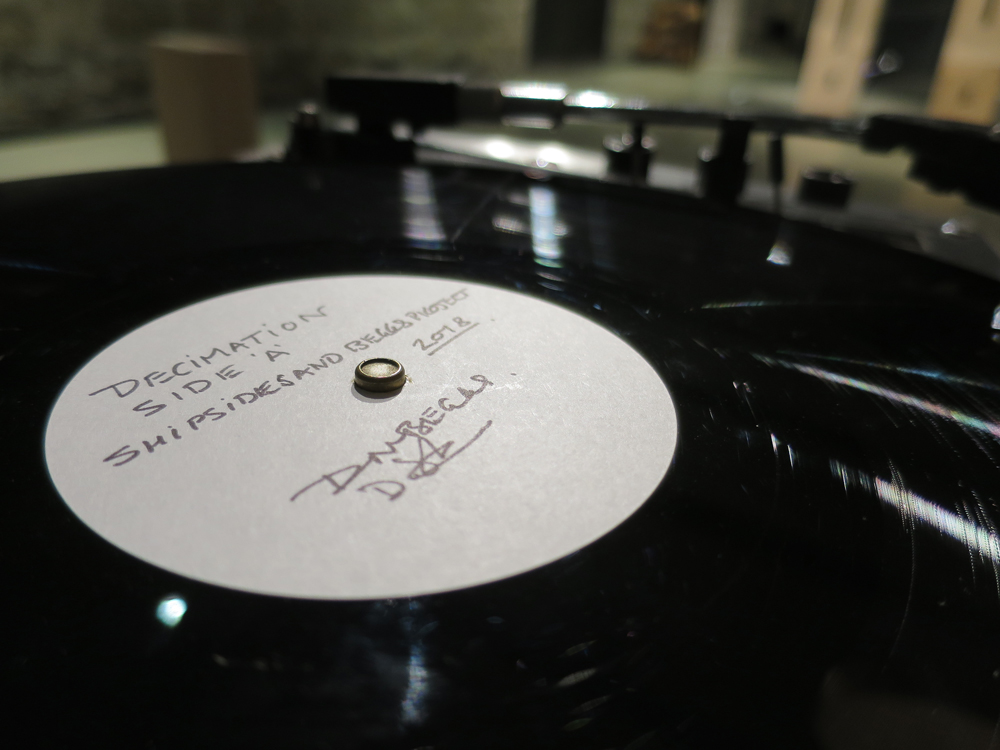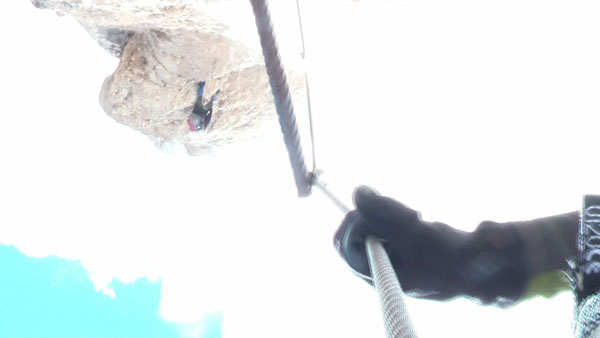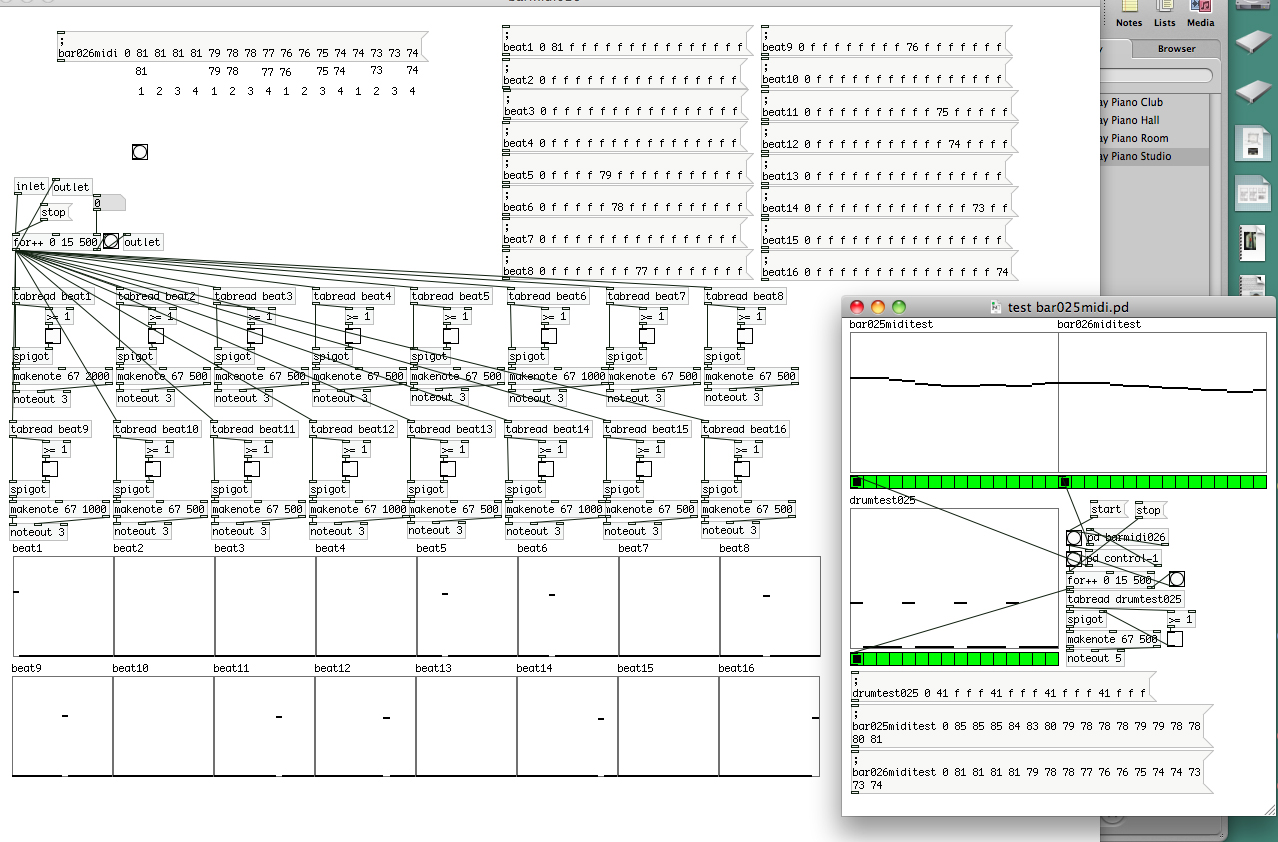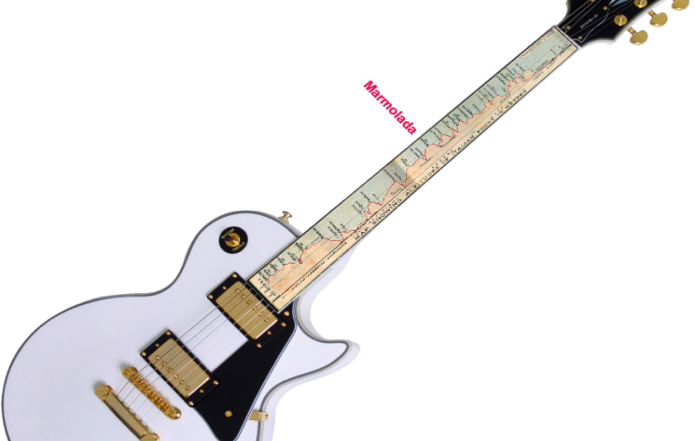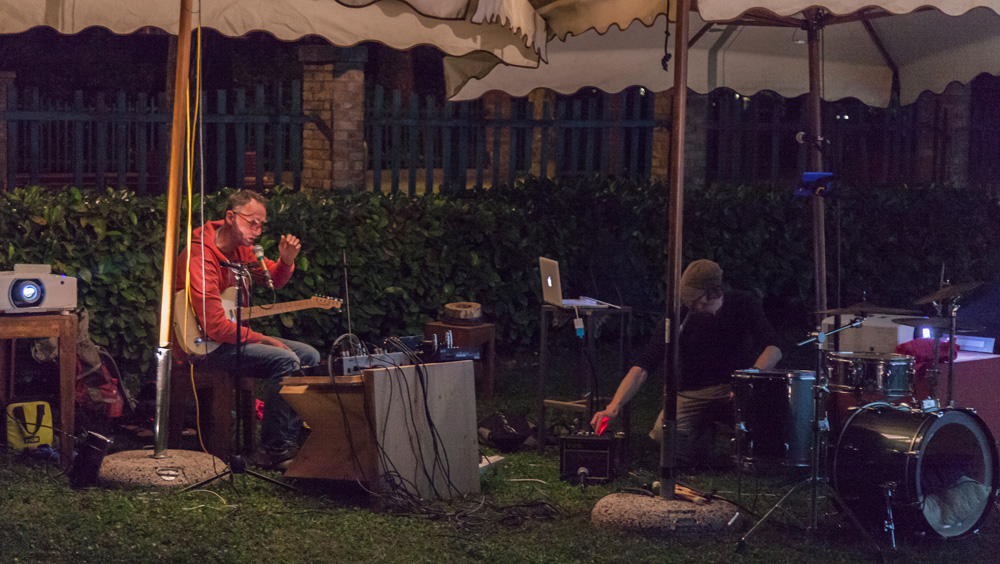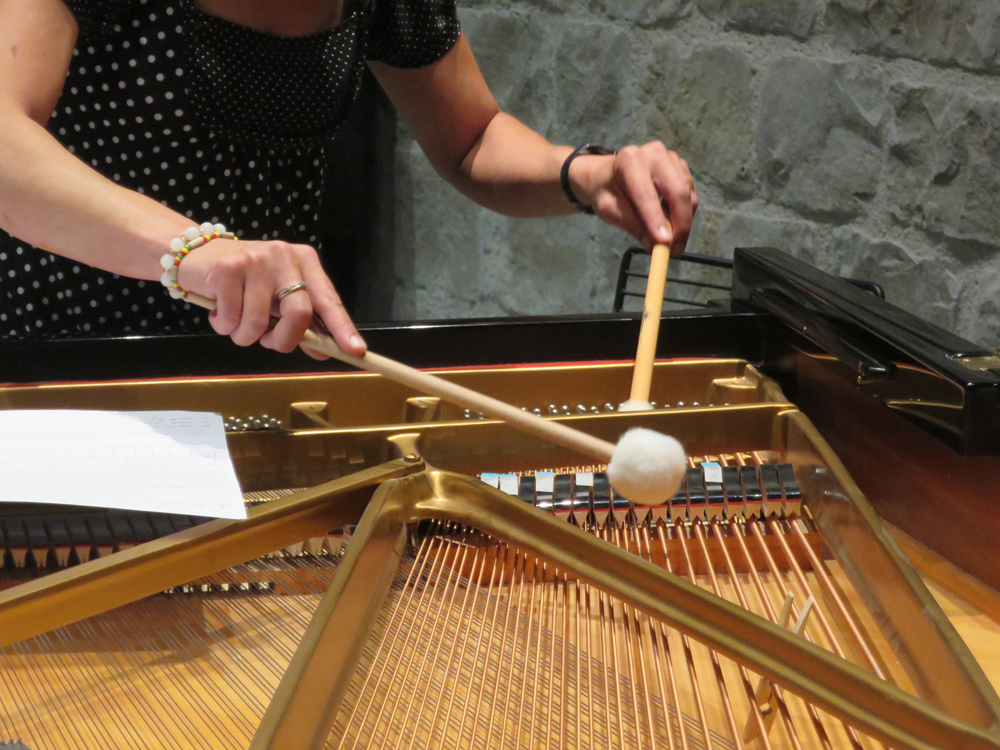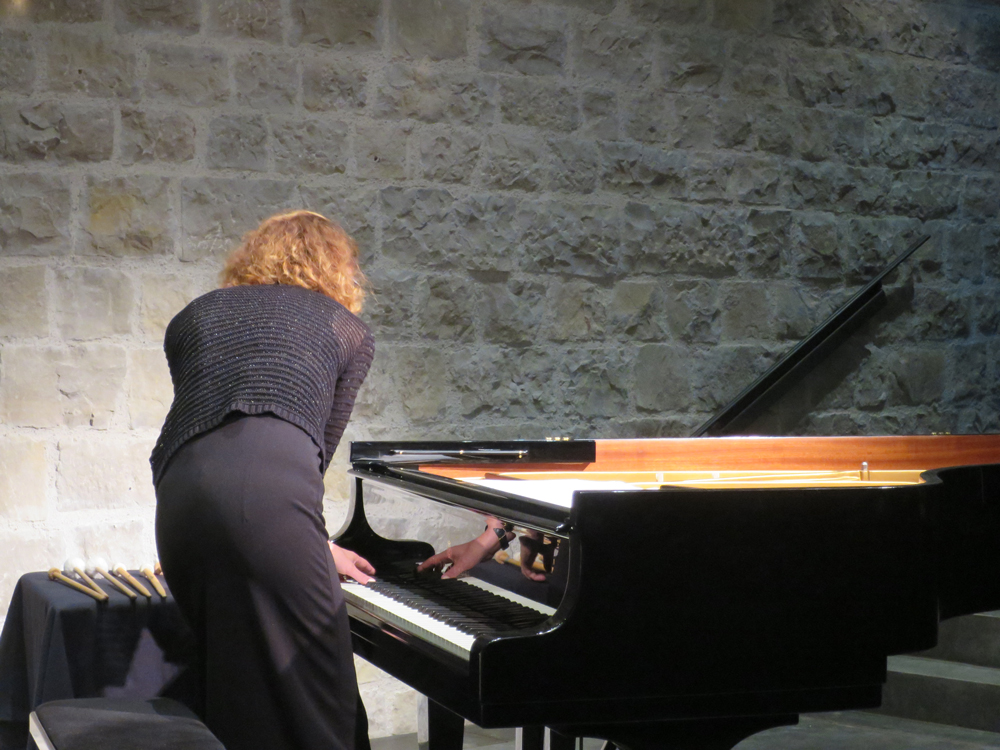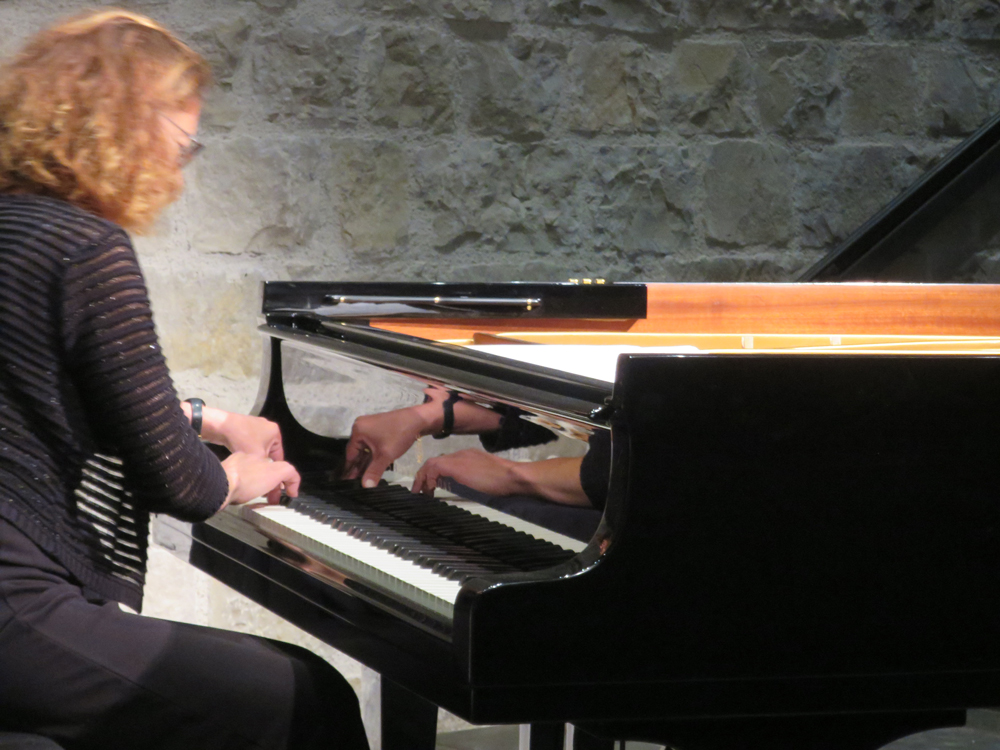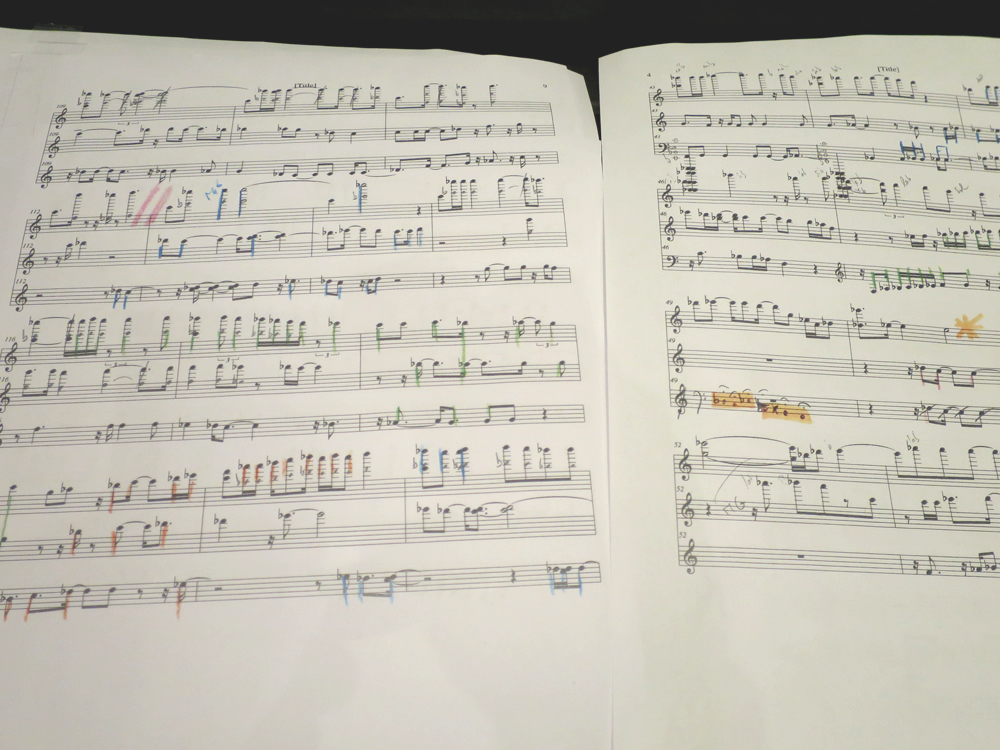Decimation in A-flat and F-minor
- Configured for Piano
Shipsides and Beggs Projects
Audio artwork (inc. 12 inch vinyl record)
31min
2018
A 3min excerpt of the audio work is here:
https://vimeo.com/258876365
The full work is here:
https://vimeo.com/287802111
Draft text:
Decimation in A-flat and F-minor is a work which has developed over several years, refining a process and developing a programming system and concept to a point where the project has reached a significant level of maturity and resolution – thanks in huge part to Neal.
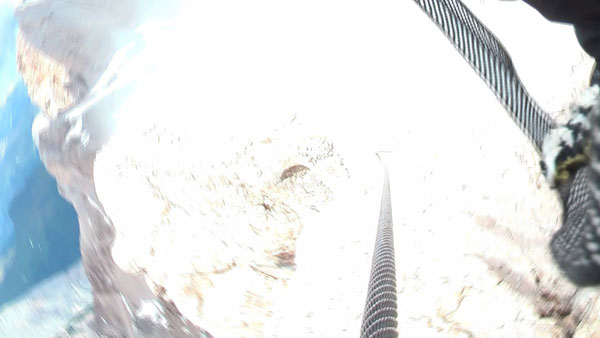
The principle is that of transcoding altitudinal height of geographic, topological and political partitions into audio data and then producing musical forms out of that data. Partially the concept developed through an association with the steel wires of Via Ferrata (tensioned metal cables and stemples introduced in WW1 as a way of industrially and militarily occupying the summits of that war frontier) and the metallic and potentially musical noise they make whilst climbing in the Dolomites and imagining what form of sound and music these literal partitions (these iron-lines in the landscape contributed to a significant historical partitioning of Europe) might constitute.
The SBP work BIVACCO (2011) explored some aspects of this phenomenon.
The process has been developed through several stages and artworks. Neal prototyped the concept through a work From Our House to the Summit of Europe – which took a line from the summit of Mount Blanc to his house in northern France. We have also developed other works using the political partition of Belgium (some of which features in Zombie Line and in the exhibition at L’Orangerie, Bastonge, 2015) and that between France and Spain (performed at Pau at the Bel Ordinaire, 2016).
Often these partitions have developed in a way to facilitate live performance (with guitar, harmonica, melodica, drums, voice, electronic instruments and improvised wind instruments) which has allowed a level of flexibility and shift so as to accommodate vernacular or popular music as elements of the partition melody connect to or suggest – for instance in the Spanish - France partition Somewhere Over the Rainbow is present in the notation. The harmonies that emerge also allow us to fold in other songs including those of our own. A raw version of the Decimation concept was experimentally performed with guitar, drums, electronics and other instruments at Microclima in Venice in 2017 and makes up the spine of a series of edited videos of this performance called THE IRON WAY (this audio/video/performative work was orginally called Decimation in D and was the basis of this matured work).
It is useful and important here to say that in French the word “partition” also refers to harmony in music in terms of how octaves are constructed and operate in relation to audio frequency – so the double meaning with geo-political partitioning is a useful tool into establishing a conceptual frame for this work.
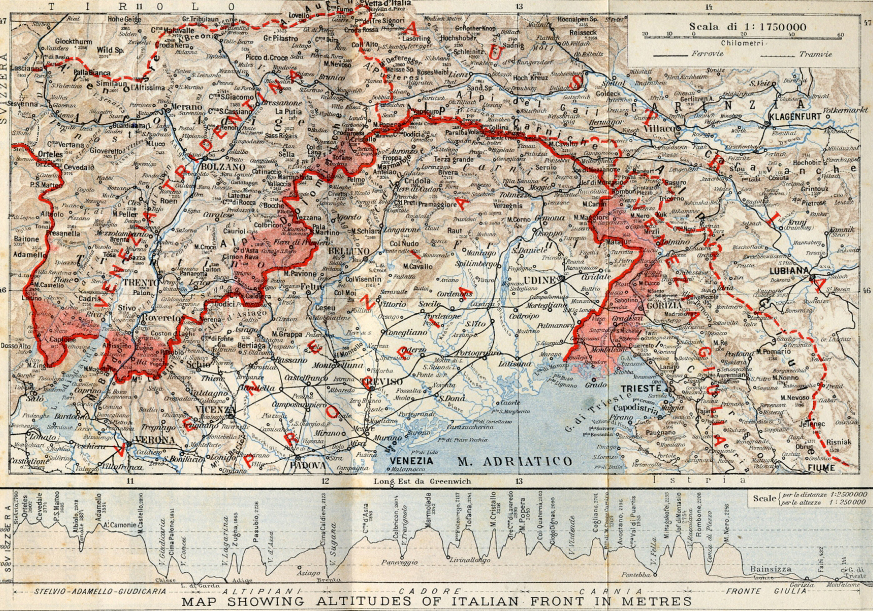
Decimation in A-flat and F-minor derives its data from the Italian-Austrian frontier in 1916 where we climbed in phases of field research and encountered the WW1 histories which is still very much a present and, at times, ghostly phenomenon. In this war, the Italian army re-instituted the terrifying policy (it also was a system used in Roman times) of Decimation. Decimation is where one in ten soldiers could be randomly selected and executed if any soldier in that section was thought guilty of cowardice. In practice, it was routinely undertaken whether cowardice had been suspected of taking place or not. In this way, the army sought to establish and exploit unwavering obedience. In a way, it establishes the fascist dynamic of totalitarian brutality where the individual has no justice, value or autonomous agency. In this light, the mass of men was decimated without attention to specific or individual value, sense or what might in be the best interests of even the local war objective – and most definitely with no cognizance of the wider interests and potential of human relationships. Decimation as a term might be a way of also thinking of the fascistic indiscriminate relationship to the planet, environment, humanity, society and the individual that follows through much of western power and economic driven politics through the 20th Century and through to neo-liberalism today.
In this context, climbing in the Dolomites (as in many other climbing locations) brings a connection to global politics and the haunting nature of what much of its power dynamics are historically built on – brutal partition, decimation and exploitation.
Consequently Decimation in A-flat and F-minor emerged from this context and has a particular haunting sensibility and beauty – although it also light and simple. It is configured for two pianos playing in chords A?and F#.
The notation in these works (and most pronouncedly developed in Decimation in A-flat and F-minor) is not simply coded from the altitudinal data – that is near impossible because one has to make decisions as to how to organise the data into sets of usable and coherent information – establishing sets of octave based data. In doing this – using Pure Data programming the process sets about creating harmonics out of chaos.
So, (quote from a performative talk in Venice 2017):
We became interested
In the octave
And the chaos
Of
Frequency
And how it is partitioned
To create
Harmony
And
Some kind
Of
Order
And in the same way
Continents
Are
Partitioned
To create
Some kind
Of balance
Now, whether that is good
Or
Bad
In discord
Or
Whatever
is an open question.
Graphically Pure Data allows information to be organised and made active visually – in patch-like sets. So, the sets of information establish a painstaking rigorous systemic flow between data faithful to the process undertaken from terrain mapping to music. There is a minute focus on details – making numbers active within a system in sets of patches – and a sense of establishing coherent harmonies within a mass of otherwise incoherent chaotic data. The system does not totalise the general idea but brings its’ structure from the terrain and the need to set up harmonic patches. This might relate to Cezanne’s landscape orientated approach to the “patch” where (we spoke about this is in the conference in La Cuisine) he speaks of perceiving harmonies which are not made from blended total scenes but from patch against patch so that difference and juxtaposition exist as crucial elements.
This system of coding through Pure Data is worked by hand - this aspect is not computer derived or batch processed. Each piece of data is individually worked with and assigned a relationship within and to the partition. It is painstaking work – but this level of proximity and built-in nuance allows for the human quality of the electronically outputted work. This is why it sounds so much as though Decimation in A-flat and F-minor is actually played by a human pianist - and why to have it performed live then became the next logical and creative step.
The work exists in several forms:
as Pure Data electronical output audio data file
as a vinyl record pressed using the audio file
as
transferred into music notation for live performance (first arranged and performed by Caroline Scotton Goulard La Cuisine in September 2018 - see above.)
A raw version of this concept was also performed with guitar, drums, electronics and other instruments at Microclima in Venice in 2017 and makes up the spine of a series of edited videos called THE IRON WAY (this audio work as orginally called Decimation in D and was the basis of this matured work). This material is here:
Decimation in A-flat and F-minor
- Configured for Live Piano
Shipsides and Beggs Projects - performed live by Caroline Scotton
36min
2018
(Click for full information here)
After an intensive period of working, transcribing the midi to sheet music and arranging the composition it was then developed and performed live by professional French classical pianist Caroline Scotton-Goulard. The event took place at La Cuisine Centre d'Arte et de Design, in France as the final phase of the Lament of the Accolade Tree exhibition by Shipsides and Beggs.
Live audio documentation of this event is here:
https://vimeo.com/298460718
